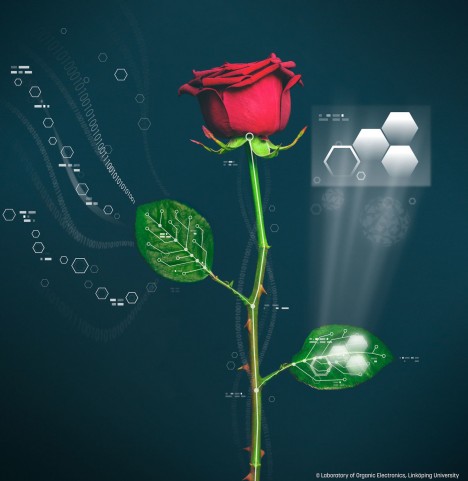A group of Swedish scientists has developed a successful method for integrating conductive wire systems into plants, naturally soaked up from a gel into leaves and stems to create complete circuits in bionic hybrids. The implications, like the currents, run in two directions: power can be harvested from plants, but the plans can also be changed through the application of external energy.
Botanists and mechanical engineers from the Laboratory of Organic Electronics at Linköping University added the gel at the base of test plants, which in turn hardened into flexible wires within the stems and leaves, all without damage to the organic components. They were then able to send electrical impulses through the plants, lightening and darkening flowers and leaves.
“Although many attempts have been made to augment plant function with electroactive materials, [until now] plants’ ‘circuitry’ has never been directly merged with electronics,” write the researchers in their paper Electronic Plants. “With integrated and distributed electronics in plants, one can envisage a range of applications including precision recording and regulation of physiology, energy harvesting from photosynthesis, and alternatives to genetic modification for plant optimization.”
A number of material combinations were tried before the effective solution was discovered. Some hardened and harmed the plants while others proved toxic or provided insufficient connectivity to be effective. The transparent organic polymer they settled on is able to fully wire a living rose, creating a bionic hybrid without compromising its natural functions.
More from the abstract: “The roots, stems, leaves, and vascular circuitry of higher plants are responsible for conveying the chemical signals that regulate growth and functions. From a certain perspective, these features are analogous to the contacts, interconnections, devices, and wires of discrete and integrated electronic circuits. The four key components of a circuit have been achieved using the xylem, leaves, veins, and signals of the plant as the template and integral part of the circuit elements and functions.”




